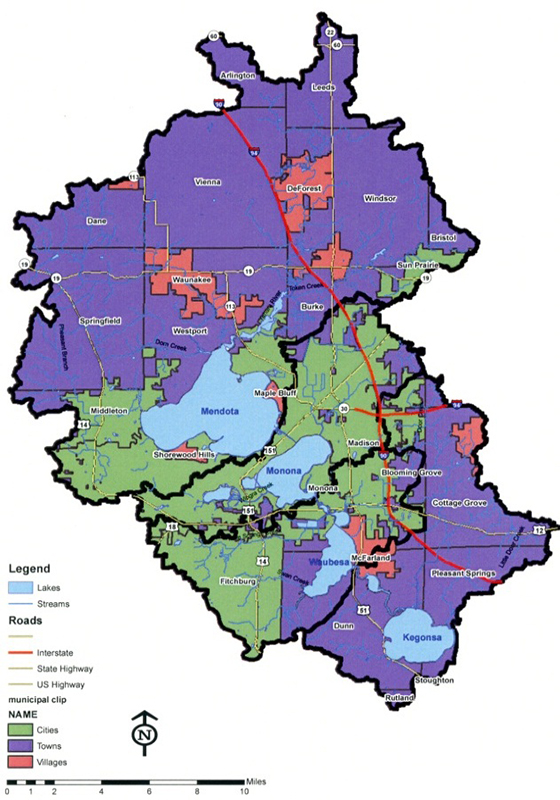Madison and other communities in the Yahara watershed base their identities on the varied water resources in the area. These waters include a chain of four large lakes, around which communities are built and with which they identify for many years. The lakes have experienced significant eutrophication because of high nutrient loading from urban point and nonpoint sources, agricultural runoff, and other sources. Algae blooms, bacteria, and other water quality issues have increasingly caused beach closures, as well as a general decline in use of the lakes during the peak recreation months of summer.
We were hired to complete the Yahara CLEAN Engineering Report as the next step in achieving significant reductions in phosphorus (P) that enters the lakes. An initial assessment of approximately 70 action items developed by previous efforts identified those actions that ranked highest in terms of immediate implementability, social acceptance, sustainability, and benefits visible to the public, among other nonmonetary factors. For the action items receiving the highest scores, we developed an opinion of P removal and costs to implement these items. Subsequently, we identified those actions that, collectively, can be reasonably implemented to result in a 50 percent or higher reduction in the total annual P load delivered to the lakes. A variety of reduction actions was necessary to achieve a 50 percent reduction in P loadings, including agricultural best management practices like manure management and cropping practices, urban stormwater practices like street sweeping and wet detention ponds, and engineered solutions like manure digesters and in-stream alum precipitation treatment, to name a few.
Through the assessment of the various action items, a long-term P reduction plan was developed. Responsible parties, respective obligations, and a mechanism for implementation were identified. Monitoring systems were identified and additional assessment methods were proposed to track performance.
Back to Project Gallery
